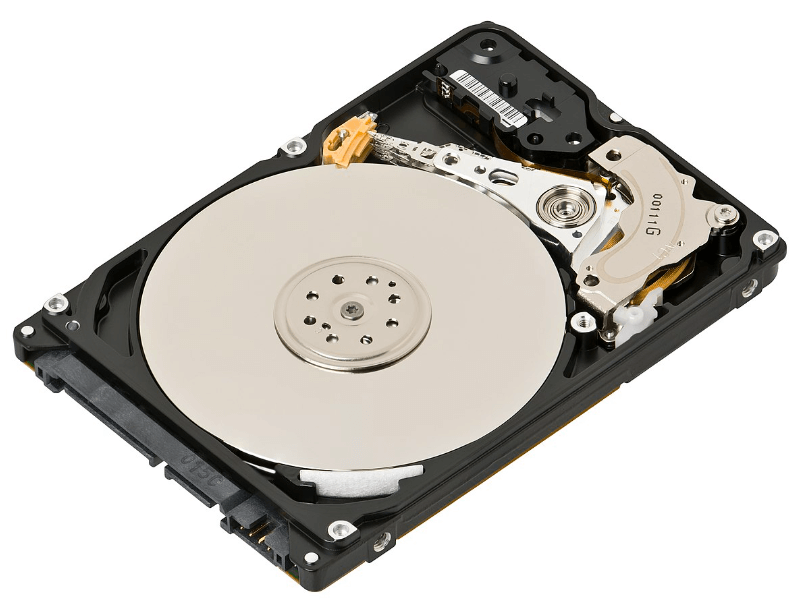Welcome to our exploration of the “G” in gigabytes (GB) and its significance in hard drive capacity. In this article, we unravel the mystery behind this essential component of digital storage.
Understanding the ‘G’ in gigabytes is crucial for grasping the immense storage potential of hard drives. From its origins as a unit of measurement to its practical implications for storing digital content, we’ll delve into every aspect.
Whether you’re a tech enthusiast seeking to deepen your knowledge or a casual user aiming to understand your hard drive’s capacity better, this article is for you. Join us as we demystify the ‘G’ in gigabytes and shed light on its importance in the world of digital storage.
What is “g in gb”?
“G in gb” refers to gigabytes, a unit of measurement representing a substantial chunk of digital information storage. When discussing hard drives, understanding how gigabytes are utilized becomes crucial for efficient storage management.

Understanding GB on a Hard Drive
What is a hard drive?
A hard drive is the cornerstone of data storage in computing systems. It comprises rigid disks coated with magnetic material, allowing for the storage and retrieval of data.
What does GB mean in the context of storage?
In storage terminology, GB denotes gigabytes, each containing a billion bytes of data. Hard drives come in varying capacities, spanning from gigabytes to terabytes and even petabytes.
How GB is Utilized on a Hard Drive
To comprehend “g in gb” on a hard drive, we must grasp how gigabytes are put to use within this storage medium.
File storage and size
Files stored on a hard drive occupy space proportional to their size. Larger files, like high-definition videos or hefty software installations, can eat up multiple gigabytes.
Operating system requirements
The operating system residing on a computer consumes a portion of the hard drive’s capacity. As OSs evolve and receive updates, they demand additional space to accommodate new features and enhancements.
Formatting and allocation
When a hard drive is formatted for a particular file system, a fraction of its capacity is earmarked for system overhead and file allocation tables. This allocation marginally reduces the usable storage space.
Factors Affecting GB Usage on a Hard Drive
Several variables influence the amount of gigabytes consumed on a hard drive:
File compression
Compressing files reduces their size, thereby conserving storage space. However, decompression is necessary before using compressed files, potentially impacting performance.
File system overhead
Every file stored on a hard drive incurs overhead related to the file system, encompassing metadata, file attributes, and directory information.
Operating system updates and patches
Regular updates and patches issued by OS vendors consume additional storage space. It’s crucial to monitor updates and manage disk space accordingly.
Optimizing GB Usage on a Hard Drive
Maximizing available storage space entails employing optimization techniques:
Disk cleanup and organization
Regularly purging unnecessary files and organizing data can liberate valuable storage space. Disk cleanup utilities and file managers aid in this endeavor.
Choosing the right file types and formats
Opting for suitable file types and formats minimizes storage requirements. For instance, using compressed formats for images and videos reduces their size without compromising quality.
Utilizing cloud storage and external drives
Offloading seldom-accessed files to cloud storage or external drives alleviates storage constraints. Cloud solutions offer scalability, while external drives provide additional physical storage space.
Future Trends in GB Usage on Hard Drives
As technology progresses, storage solutions evolve:
Solid-state drives (SSDs)
SSDs offer faster data access and greater reliability than traditional hard disk drives. With increasing capacities and declining costs, SSDs are gaining traction.
Cloud-based storage solutions
Cloud storage solutions deliver virtually unlimited scalability and accessibility. As internet speeds improve and privacy concerns are addressed, more users opt for cloud storage.
Conclusion
Understanding “g in gb” on a hard drive is pivotal for effective storage management. By comprehending the fundamentals of gigabytes and hard drives, along with factors influencing storage usage, users can make informed decisions regarding storage solutions and data management strategies.

Frequently Asked Questions On G’ in Gigabytes on Hard Drives
What distinguishes a gigabyte from a gigabit?
A gigabyte (GB) is a unit of digital information storage capacity, equivalent to one billion bytes. Conversely, a gigabit (Gb) denotes data transfer rate, equal to one billion bits.
How much storage space does an average OS necessitate?
The storage requirements of an operating system vary based on the version and configuration. Typically, modern OSs require several gigabytes of storage space.
Is it possible to upgrade a hard drive’s storage capacity?
Yes, in many instances, it’s feasible to enhance a hard drive’s storage capacity by replacing it with a larger one or adding an additional drive.
What’s the typical lifespan of a hard drive?
A hard drive’s lifespan hinges on factors like usage patterns, operating conditions, and manufacturing quality. On average, it can last three to five years.
Are there any risks associated with cloud storage?
While cloud storage offers numerous benefits, such as scalability and accessibility, it poses risks like data breaches and service outages. Opting for a reputable provider and implementing robust security measures mitigates these risks.








